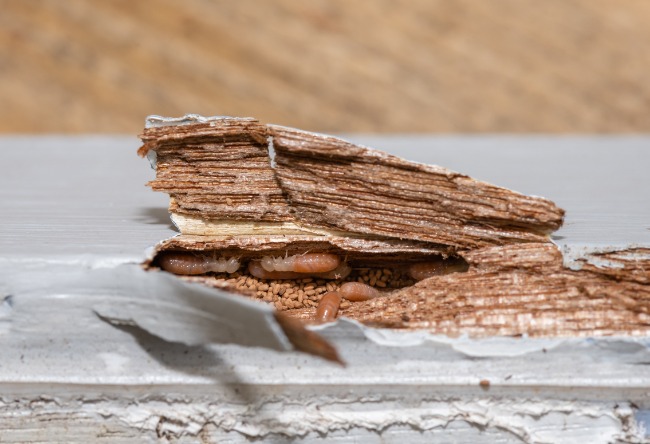
From fecal pellets and discarded wings to tapping sounds and kick holes, these elusive invaders, known as drywood termites, have mastered the art of infesting the very structures that shelter us.
As they tunnel through the wood, leaving behind hollowed-out galleries and compromising the structural integrity, the effects of their presence may become increasingly apparent. Join us as we delve deeper into the fascinating world of termites in walls, exploring the signs that alert us to their hidden activities and the importance of early detection.
Types of Termites in Wall Spaces
Within the walls of our homes and buildings, a fascinating yet potentially destructive phenomenon occurs– the infiltration of drywood termites.
Unlike their subterranean counterparts, drywood termites possess unique adaptations that allow them to thrive without direct contact with the ground, making walls their chosen domain. Through minute cracks or exposed wood surfaces, they skillfully infiltrate the walls, embarking on their covert mission.
Once inside, they exhibit architectural prowess, meticulously carving out networks of tunnels and chambers within the wooden framework. Unlike subterranean termites that leave telltale muddy trails, these astute creatures prefer pristine, smooth galleries concealed within the walls, evading detection.
Walls, usually considered sturdy barriers, unwittingly harbor these industrious insects and their disruptive activities. Over time, the damage inflicted by termites in the wall can be substantial, compromising the structural integrity of the affected areas. However, there is no cause for despair, as professional assistance is readily available.
Upon suspecting the existence of termites within your walls, it becomes crucial to engage the expertise of licensed pest control professionals like Innovative Pest Solutions in Raleigh, North Carolina. Equipped with comprehensive knowledge and specialized tools, we conduct meticulous inspections, confirming the infestation and devising effective strategies to alleviate the situation.
Signs You Have Termites in Wall Voids or Other Spaces Indoors
Detecting the presence of termites hiding within your walls requires keen observation and awareness of specific signs, especially when identifying drywood termites and their elusive activities.
Fecal Pellets
Drywood termites leave behind a telltale clue of their presence: fecal pellets. These tiny droppings, resembling elongated rice grains or sawdust, hold significant diagnostic value.
As these termites tunnel through the wood within your walls, they meticulously deposit these pellets, often accumulating in small piles near their entry points or beneath infested areas. The sight of these distinct fecal pellets serves as a strong indication of an ongoing drywood termite infestation, prompting the need for immediate attention and professional intervention.
Discarded Wings
When drywood termites swarm and establish new colonies, they develop wings to find new potential mates. After finding a suitable place to live, often within your home, these winged skates shed their appendages and set up shop indoors.
These discarded wings, delicate and translucent, are frequently discovered near windowsills, light fixtures, or doorways. If you spot wings around your home during peak termite seasons, there’s a chance you could have termites in wall voids or spaces in your home.
Tapping Noises
One fascinating aspect of drywood termite behavior is their ability to produce audible signs of their presence. These insects tunnel and chew through the wood, generating distinct tapping or rustling sounds.
While often subtle and faint, these clicking or tapping noises can emanate from within your walls, serving as potential auditory indicators of termite activity. Hearing such sounds, particularly during quiet moments, could be a valuable clue of termites at work.
These subtle acoustic cues may help you mitigate a potential termite infestation before it causes extensive damage to your living spaces.
Kick Holes
As drywood termites establish colonies within your walls, they create small openings, aptly named kick holes, to expel their waste.
These kick holes, typically no larger than a pinhead, serve as discreet exit points for the termites’ distinctive fecal pellets. If you closely examine the surface of infested wood or walls, you may notice these openings, offering a glimpse into the hidden activities.
While easily overlooked due to their size, these kick holes provide valuable visual evidence of a drywood termite infestation, highlighting the need for a professional inspection and targeted treatment to effectively address the issue.
Damaged Wood
Another sign of termites in walls is the sign of damaged wood. As drywood termites feed on the wood within your walls, they leave a distinct mark of their activity—a network of hollowed-out tunnels and galleries. These insects voraciously consume the cellulose-rich material, excavating intricate pathways within the wooden structure. As a result, the infested wood becomes visibly weakened from the inside.
You can perform a simple test by gently tapping or pressing on the suspected infested areas to detect this hidden damage. If the wood emits a hollow sound or feels notably softer than expected, it likely indicates internal damage caused by termites.
This compromised structural integrity serves as a silent reminder of the ongoing infestation, emphasizing the urgency of professional intervention to halt the termites’ progress and prevent further deterioration of the affected walls.
Timely action and expert guidance are vital to avoid potential risks and restore the integrity of your living spaces.
Tight-Fitting Doors or Windows
When termites infiltrate and infest the walls of a structure, they can induce structural changes that extend beyond the confines of the wood they consume. Affected areas may undergo subtle shifts that can impact surrounding elements, including door and window frames.
If you find yourself grappling with doors or windows that suddenly resist smooth operation, requiring increased force, or exhibiting a misaligned fit, it could be a consequence of termite-induced damage within the adjacent walls.
Termites’ relentless feeding and tunneling activities can compromise the stability and integrity of the surrounding structures, resulting in uneven or distorted frames. Recognizing these telltale signs of termite impact on the door and window functionality is crucial, as it can prompt you to take immediate action by seeking professional assistance.
Want to attempt some DIY door or window repair? Check out this handy guide!
Termites in Wall Spaces? Contact Us Today!
By promptly addressing the underlying termite infestation, you can restore the proper functionality of these vital openings and prevent further structural damage that termites can cause if left unchecked.
Remember, early detection and intervention play pivotal roles in safeguarding your Raleigh home or building from the far-reaching consequences of termite activity.
If you observe any of these signs, especially the presence of fecal pellets or discarded wings, it is crucial to consult a professional pest control service like Innovative Pest Solutions for a thorough inspection.
We can accurately identify the type of termites, including drywood termites, and recommend appropriate treatment measures to address the infestation. Early detection and intervention can help minimize damage and prevent further spread within your walls. Contact us today!





